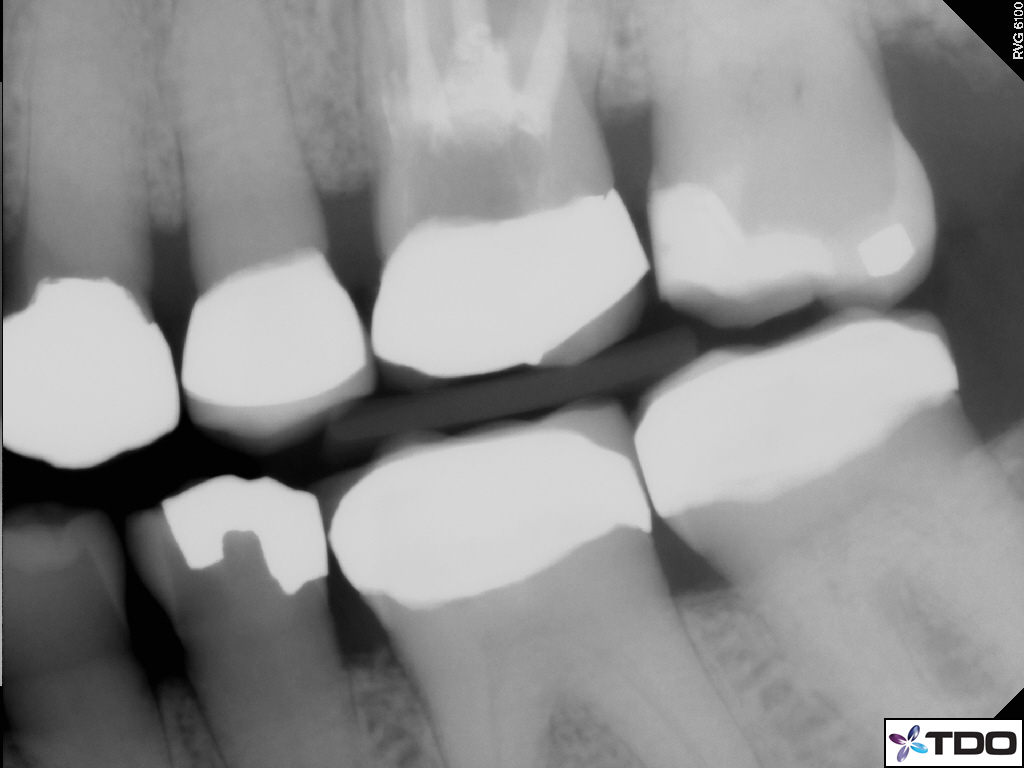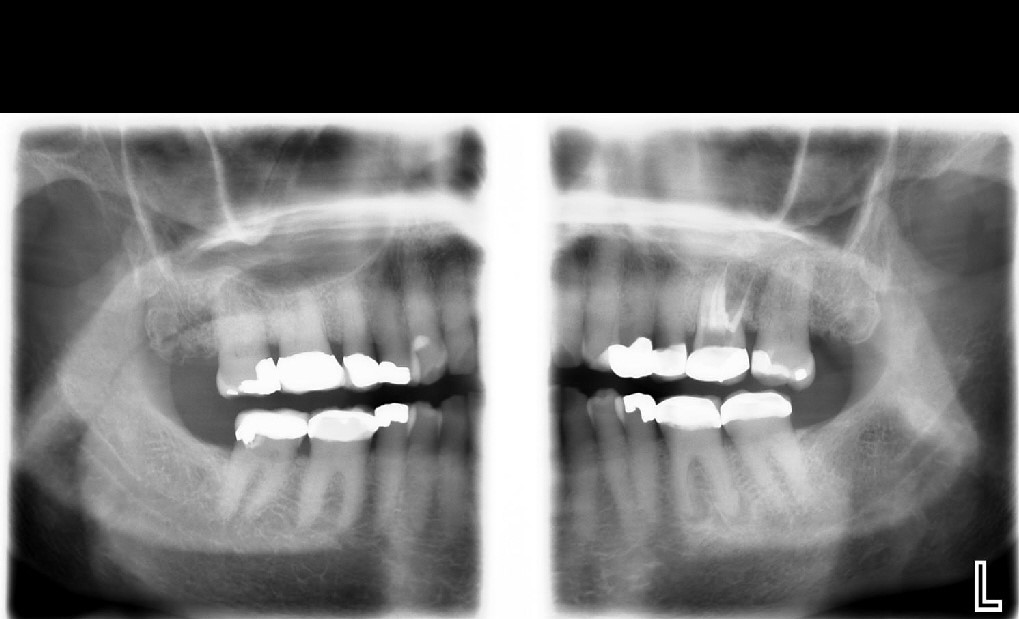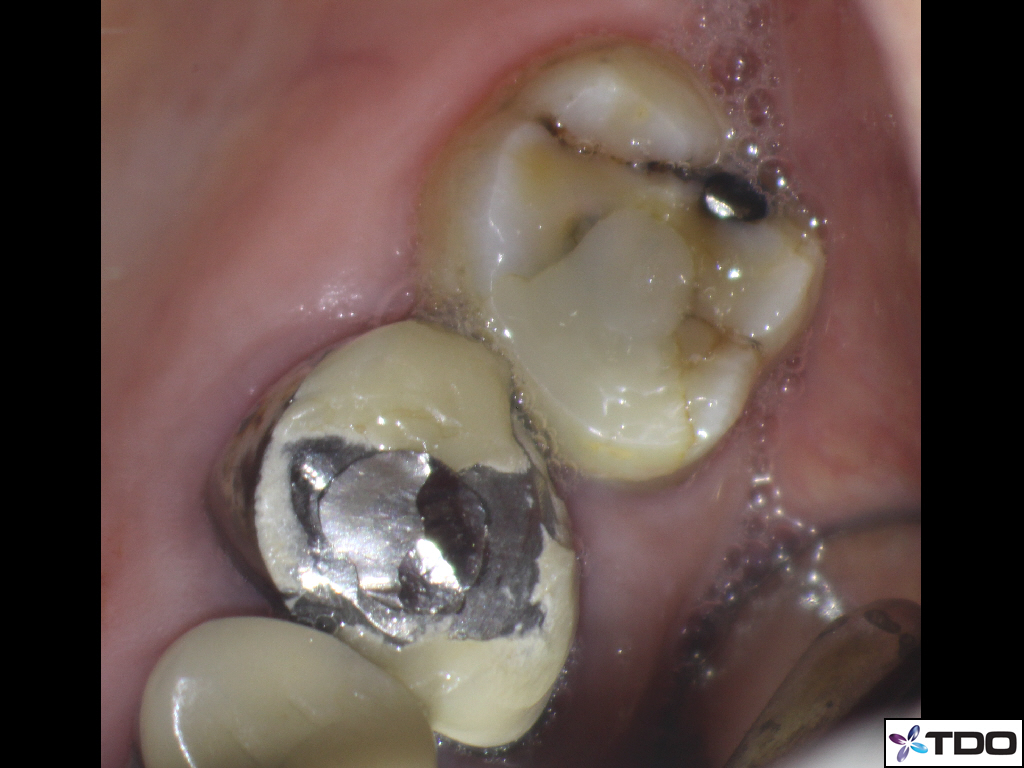Treatment Planning Needed – 3
This patient was referred to me for Endodontic treatment of tooth # 36, the left mandibular first molar. The patient presented with symptoms to chewing and on percussion. Radiolucent findings were present at both apices in the referral’s periapical and panoramic images.



Clinical examination of the mouth showed several areas of fractured porcelain, especially in the opposing first molar, #26. The Patients hygiene was less than optimal and I noted that there was a chamber void in the previously endodontically treated #26.


Clinical examination of the mouth showed several areas of fractured porcelain, especially in the opposing first molar, #26. The Patients hygiene was less than optimal and I noted that there was a chamber void in the previously endodontically treated #26.
Although there was temptation to merely disregard #26 and focus on the patient’s current complaint, I suggested to both the referral that the fractured porcelain in both of these first molars was indicative of a possible bruxism/parafunction problem and that tooth #36 would not be of much value if the Endodontic treatment in tooth #26 failed due to (1) coronal leakage and (2) lack of coronal seal caused by leaky margins in the Crown or (3) the presence of the void in the Chamber.
In other words if we’re going to treat this patient properly we should give them an estimate for:
1. Endodontic treatment of tooth #36
2. New Crown on tooth #36
3. Remove the Crown in tooth # 26 determine whether this tooth was restorable
and if the Endodontics was is acceptable
4. Re-restoration of #26
We needed to reconstruct both # 26 and # 36 to give the patient a reliable predictable occlusion between these two molars.
There is a tendency to focus on the patient’s current complaint because of symptoms. However we must always be cognizant of the fact that teeth function in pairs and the condition of the opposing tooth and the reliability of the previous treatment in that tooth must be considered if we expending approximately $3000 on rehabilitation of this single molar tooth.
In the best case scenario rehabilitation of these molars results in a good long term result for the patient. In the worst case scenario tooth # 36 is endodontically treated and crowned only to find us losing #26 and rendering tooth #36 nonfunctional without prosthetic replacement of the opposing tooth.
So whose responsibility is this? Is it the referring dentist or does the endodontist need to point this out during the consultation appointment ? How far does the consultation and treatment plan prerogative extend when patients are referred for endodontic treatment?
To get the best result for the patient, dentists and specialists must work together to ensure that piecemeal referral is not performed without consideration of how this best fits into the overall patient treatment plan.
